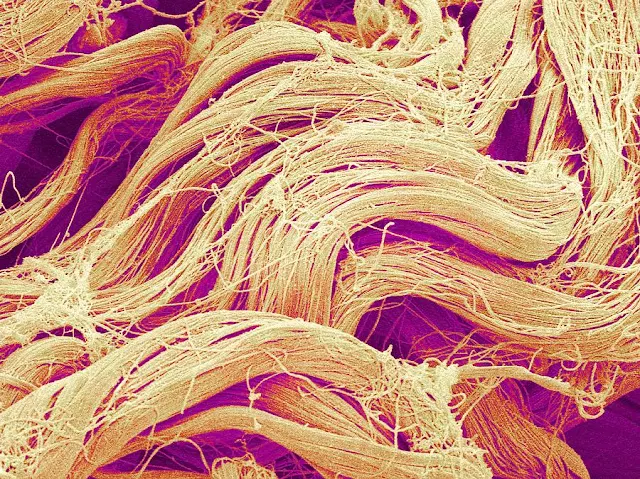Introduction: Collagen is the most abundant protein in mammals, occupying up to a third of the total mass. There are at least 16 types of collagen. Its fibers are a major component of tendons and they are also found abundantly in skin. Collagen is also prominent in cornea, cartilage, bone, blood vessels and the gut.
Structure of Collagen: Collagen’s structure is an example of a helix of helices, being composed of three left handed helical chains that each are coiled together in a right-handed fashion to make the collagen fiber. Each helix is stretched out more than an α-helix, giving it an extended appearance. On the inside of the triple helical structure, only residues of glycine are found, since the side chains of other amino acids are too bulky. Collagen chains have the repeating structure glycinem-n where m is often proline and n is often hydroxyproline. Collagen is synthesized in a pre-procollagen form. Processing of the pre-procollagen in the endoplasmic reticulum results in glycosylation, removal of the ‘pr sequence, and hydroxylation of lysine and proline residues. The hydroxides can form covalent cross-links with each other, strengthening the collagen fibers. As pro-collagen is exported out of the cell, proteases trim it, resulting in a final form of collagen called tropocollagen.
RELATED;
1. Proteins
3. Amino acids












No comments:
Post a Comment